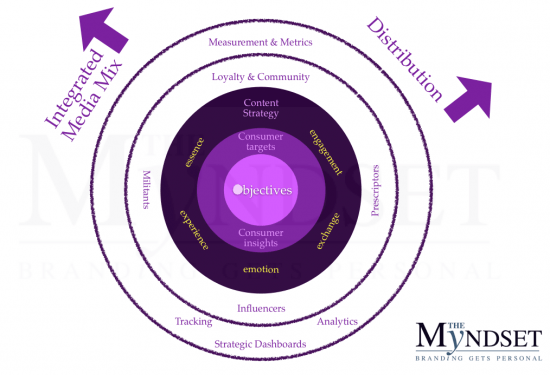If you are presently considering enhancing your digital marketing strategy, you need to know that the path will likely be tricky (a) if the top brass doesn’t fully endorse and  embody digital, (b) the other departments are not involved and (c) you haven’t evaluated the basic infrastructure and capability needs. Before embarking on the digital marketing strategy, the key element is making sure that there is clarity and alignment on the overall brand strategy. The digital component should only be at the service of the overall strategy. {Click to Tweet}.
embody digital, (b) the other departments are not involved and (c) you haven’t evaluated the basic infrastructure and capability needs. Before embarking on the digital marketing strategy, the key element is making sure that there is clarity and alignment on the overall brand strategy. The digital component should only be at the service of the overall strategy. {Click to Tweet}.
Assuming the above are true (and that may be a big assumption), with a hat tip to my good friend Jeremy Waite at Adobe, here are the five cornerstones for creating or boosting a digital marketing strategy:
Customer centric
The first point of call should be the customer. To the extent digital has a tendency to reduce the number of layers between the end customer and the brand (whether we are talking B2B or B2C…), it is vital to focus on a target customer, to know who they are, where they are and what they like. Brand marketing teams should start by seeking key insights into these customer groups. Among the target groups for consideration should be the different types of consumers as well as the influencers and prescriptors.
Content Strategy
Some brands are spoiled for material. Others are very dry and almost need to start from scratch. Having established an objective and target group, the next step is to come up with a content strategy. A key question I like marketing teams to answer is: why will customers want to share with their friends and family what you have to say? Brands that have — written into their fabric — a higher purpose that resonates with its employees are likely to have an easier time crafting their content strategy. This relates to having a brand with a mission that touches on the emotions. It is for this reason, in the schema below, the ☻of objective is filled in. Having a clear purpose — beyond improving sales — makes the whole marketing effort decidedly more meaningful.
Focus on Loyalty
The key consideration here is to find a recurring reason for a customer or potential customer to want to return to your content. What’s going to make her come back for more? The more your content is relevant, useful (youtile as Jay Baer might say) and/or entertaining, the more loyal the reader/user will likely become. Too many brands continue to emphasize acquisition (i.e. customer, territory or brand) as opposed to deepening the existing base, aka organic or same-store growth. Having new friends or fans is indeed relevant. The question to be answered is: for what reason are these new friends coming and joining you? If it is to hand over their personal details, the brand must provide substantive value in return, what I call the Value Exchange. Especially considering the increasing privacy concerns, the customer must feel that the brand is trustworthy.
Measurement & Metrics
There is no lack of data these days. Hence the new trendy topic of Big Data. Of course, digital is, at its core, data. The issue is what to do with it and on which data to focus. The link between your digital marketing activities and straight sales is still complicated for non-pure players. However, there are many ways to create a funnel that leads to a monetisable or, at least, a valuable conclusion. Tracking and analyzing that data to come up with a clear picture on the efficiency and effectiveness of different programs is entirely feasible with the right tools. Having a clear picture on the single client (with his/her multiple identities) is a different kind of challenge, but must be attacked for any serious eCRM programs.
Distribution and integrating into the overall media mix
There is no way to have a successful content marketing strategy without a distribution strategy. There are multiple avenues for digital content to be disseminated (not limited to):
- the employee base
- social media and bloggers
- Search Engine Marketing
- at the bottom of emails
- partners and allies
- PR
- events
- mass media…
Finding ways to track the flow of information can be complex. However, the more the teams work together up front and embed tracking into the content, the better the ability to attribute and understand the effectiveness of the different channels. One of the more unexplored channels is the employee base. Notwithstanding the legal challenges, the key ingredient here is having a brand with an explicit and shared mission. The request for employees to engage then becomes a moot point.
Whenever a digital marketing strategy is being put in place, agility, learning and revising are key ingredients for ongoing success. {Click to tweet} And, finally, not to harp on the point, but if the first three issues identified at the start of this article have not been settled, then I suggest that they be squarely put on the table during the upcoming budget discussions!
Your reactions and/or experiences?












Well the first thing that comes to mind when we think about our business: the features we offer to our customers, either products or services.
Well the first thing that comes to mind when we think about our business: the features we offer to our customers, either products or services.